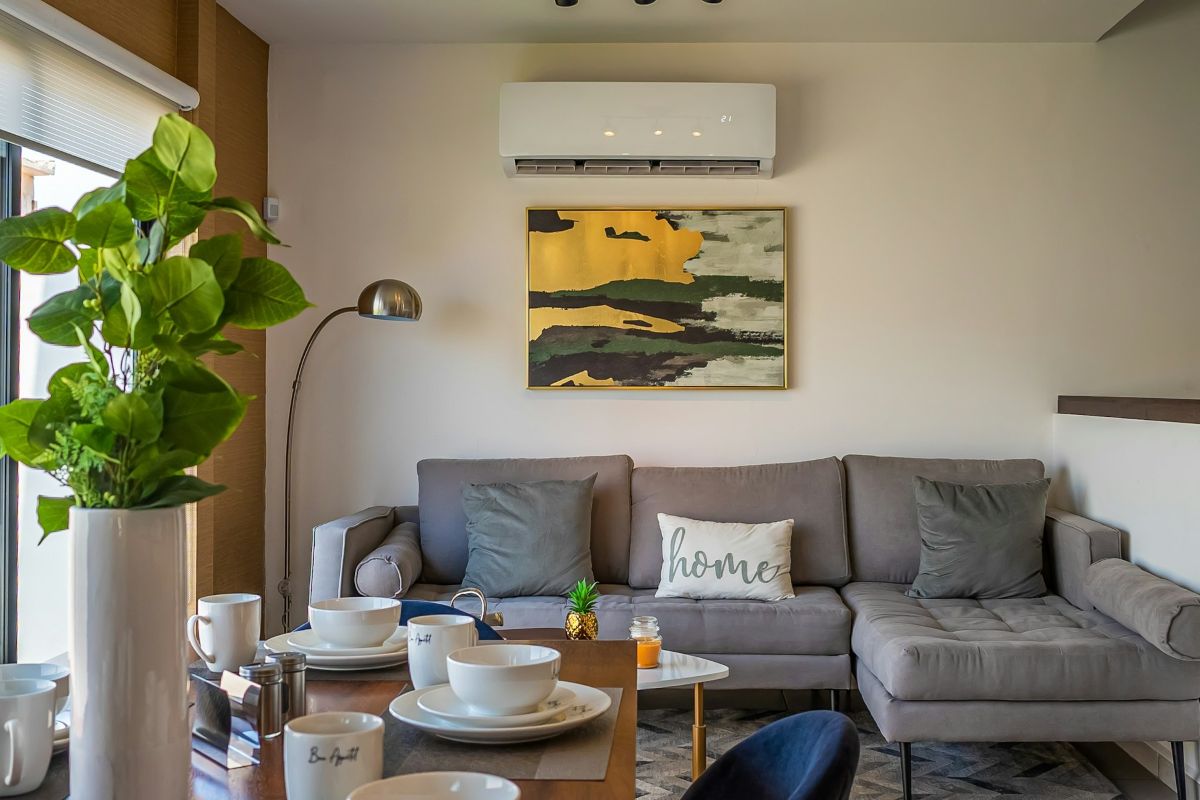Air Conditioning: Price vs performance
Air conditioning systems play a key role in providing a comfortable indoor climate. Famed for their ability to cool and dehumidify hot spaces, the air conditioning unit is a staple across residential, retail, hospitality, hotels and offices. Correct product selection is essential in keeping end users happy and delivering systems that don’t cost the earth in operational costs or environmental impact. However, product decisions can be compromised when installation cost becomes the dominant deciding factor, putting price over performance.
This article explores the different types of air conditioning systems available, system considerations, the risks of putting price over performance, the impact of poor product data, and how to identify high performing products.
Air Conditioning systems overview
Air conditioning (AC) systems are designed to maintain and control the air temperature and humidity within an area, to make it comfortable for the people within. Primarily used for cooling and dehumidification, some air conditioning units can also provide functions such as air purification, ventilation or supplemental heating. Temperature control is on-demand and seasonal, with systems designed to offset lower density heat loads (e.g. heat generated by people, electronics, lighting etc.) usually when buildings are occupied.
Air conditioners come in a wide range of different units and can be ducted or non-ducted. Unit types include:
- Heat pumps (for heat delivery)
- Comfort air conditioner / heat pump
- Packaged unit
- Single split unit
- Multi split unit
- Single-duct air conditioner
- Double-duct air conditioner.
Air conditioning systems typically use a vapour compression cycle, driven by an electric compressor. The two most common types of compressors are the ‘fixed speed’ type and the ‘variable speed’ (inverter) types. With conventional ‘fixed-speed’ air conditioners, the compressor is either on and working to 100% capacity or off. With the variable speed type, an inverter changes the compressor’s motor speed, matching supply with demand. This achieves the desired temperature conditions in the most economical way as the compressor modulates its capacity and is not forced to always work at 100% speed.

System considerations
When purchasing an air conditioning system there’s a need to balance comfort, performance, efficiency, and long-term value. Considerations include:
1) Type of unit: Will the project be best served by a ducted or non-ducted unit, split or multi-split, heat pump etc?
2) Cooling capacity: Measured in kW or BTU, the unit must be properly sized for the space.
3) Energy efficiency: More efficient units reduce electricity bills and environmental impact.
4) Noise levels: Indoor and outdoor unit noise is important for comfort, especially in bedrooms or quiet zones.
5) Indoor Air Quality (IAQ): Do you want a unit with extra features like air purification or humidification? What filtration level does the unit provide?
6) Maintenance: What is the ease of maintenance, how often do filters need replacing, what is the availability of service support and how long is the warranty?
7) Control options: Does it include features like remote control, programmable timers, or smartphone/Wi-Fi control to enhance usability and efficiency. Does it allow integration with smart home automation?
8) Certified Performance: Does the system hold independently and impartially verified performance data, or is all performance data self-declared by the manufacturer?
9) Environmental impact: Does the unit use a low Global Warming Potential (GWP) refrigerant to reduce environmental impact?
10) Budget and total cost of ownership: Purchase price, installation cost, running costs and maintenance must all be considered.
It’s therefore vital that HVAC professionals and their clients can make informed decisions, based on cost and product performance.
Choosing price over performance
When product price takes priority, the decision maker is at risk of:
Reduced energy efficiency
Cheaper units tend to have lower energy efficiency ratings and fixed speed compressors. This can lead to:
- Higher electricity bills
- Greater environmental impact and carbon footprint due to increased energy consumption.
Poor indoor comfort
Budget AC units may struggle to:
- Maintain consistent temperatures
- Control humidity effectively
- Operate quietly.
This can result in hot/cold spots, damp air, and noisy operation, all reducing comfort.
Reduced system lifespan and increased maintenance costs
Budget air conditioners may struggle to meet required temperatures and can therefore experience premature wear and tear. This leads to an increased likelihood of component failure due to excessive workload.
Low-cost units can also be built with lower-quality materials, and have less reliable parts, impacting on product lifespan and longevity.
Reduced warranty / manufacturer support
A budget system may lack robust manufacturer support or longer warranties. Over time, repair costs can easily outweigh the initial savings.
Incompatibility with smart and sustainable systems
Cost-focused choices may not support:
- Smart thermostats or controls
- Compliance with future energy regulations or building certifications.
Missed incentives or rebates
Higher-performance, energy efficient units can often qualify for a range of incentives including government grants or utility company incentives. Cheaper models may not, reducing the total cost advantage.
In short, choosing a low-cost AC unit might seem economical upfront, but it often leads to higher energy bills, discomfort, reliability issues, and early replacement. For long-term value, a performance-focused selection, based on accurate manufacturer data typically delivers better comfort, efficiency, and return on investment.
The impact of poor performance data
While this article is emphasising how purchasing decisions should not be made on budget alone, manufacturer performance data must be correct to make good product decisions. If it is not, the AC unit’s real-life performance may not meet manufacturer claims. This can have a similar impact to choosing a budget option.
When products are selected based on inaccurate data many things can go wrong. Impacts include:
- Oversized systems: which waste energy and create excessive noise.
- Undersized systems: which fail to provide adequate indoor comfort.
- Non-compliance with regulations.
- Higher energy consumption and higher ongoing running costs.
- Increased carbon footprint and environmental impact.
- Increased wear and tear, requiring more frequent maintenance and downtime.
- Risk of early system failure as motors and fans in undersized systems may run at improper speeds, causing overheating, excessive noise, and performance loss.
All these things result in unhappy clients. It’s therefore essential to use accurate, verified manufacturer data.
How to identify high performing products
How do you know product data is accurate? A key strategy is to choose products that have been independently and vigorously tested by an impartial third-party. This is where Eurovent Certification plays a crucial role.
The Eurovent Certified Performance programme for Air Conditioners attests the conformity of air conditioning units to European Standards and verifies manufacturer data to guarantee products will perform as advertised. All products in the programme go through exactly the same process, ensuring accurate data from rival manufacturers can be directly compared across a range of certified characteristics. This is crucial in selecting products and sizing systems. With energy efficiency proven, decision makers can make informed product choices across a range of considerations, including if installation cost provides true value over the lifecycle of the product.
Conclusion
Prioritising air conditioning installation price over product performance and energy efficiency can have significant long-term consequences for HVAC professionals, end users and the environment. As can choosing products without independently verified performance data. While a lower upfront cost might seem appealing, it often leads to higher energy bills, reduced comfort, more frequent maintenance issues, and a shorter system lifespan. For professionals, recommending subpar systems can harm their reputation, lead to dissatisfied clients and result in costly callbacks. In contrast, investing in certified, high-performance, energy efficient systems typically ensures reliable operation, regulatory compliance, and lower total cost of ownership.
View certified air conditioners
Discover more about the air conditioner programme



